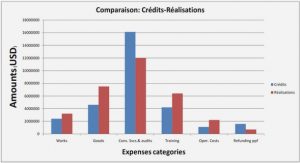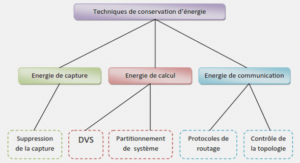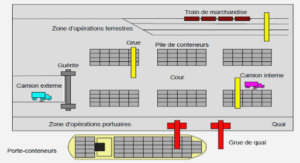Labeled-15N ammonium and nitrate additions
Boreal forests growing in young postglacial landscapes are generally nitrogen (N) limited (Lambers et al. 2008; Tukey 1970; Vitousek and Howarth 1991). Increased deposition of this essential nutrient worldwide has raised biochemical and ecological questions (Galloway et al. 2004; Galloway et al. 2008; Grantz et al. 2003; Hogberg 2007). For instance, a growing number of studies suggest that increases in tree growth over recent decades in some areas of the northern hemisphere might be linked with higher N deposition (Magnani et al. 2007; Nave et al. 2009; Reich et al. 2006; Sievering et al. 2000; Thomas et al. 2010). However, the fate of N deposited on forest ecosystems is still largely unknown, particularly for forests receiving low rates of N deposition.
Labeling studies using the heavy stable isotope of N (i.e. 15N) have been conducted to address some aspects of N cycling and retention in forests, under controlled as well as natural conditions. Until now, the soil, rather than the vegetation, has been considered the principal sink for N wet deposition in N-limited or N-saturated systems (Templer et al. 2012). However, this conclusion is somewhat in disagreement with throughfall and stemflow observational studies and experiments, where forest canopy is an important sink for inorganic N, especially in N-limited systems (Cape et al. 2001; Chiwa et al. 2004; Gaige et al. 2007; Houle et al. 1999). This discrepancy could be explained by two factors. In most experiments, 15N was added directly to the forest floor bypassing potential interactions with aboveground compartments (as suggested by Jenkinson et al. 1999;Sievering 1999). Secondly, when 15N tracers were applied to the aboveground vegetation, either in a plantation (Adriaenssens et al. 2011; Bowden et al. 1989; Chavez Aguilar et al. 2006; Eilers et al. 1992; Wilson and Tiley 1998), in a greenhouse (Lumme 1994; Lumme and Smolander 1996; Macklon et al. 1996), or directly in the field (Boyce et al. 1996; Garten et al. 1998; Nave and Curtis 2011; Vose and Swank 1990), it was done only partly on branches of mature trees (Boyce et al. 1996; Vose and Swank 1990) or on seedlings or saplings, which may not allow inferences to be made on processes by which the whole mature tree acquires N. Young versus mature trees are known to have important distinctive morphological, structural and physiological features that affect the chemistry and flux of throughfall and stemflow or directly influence N demand (see reviews in Olson et al. 1981; Wilson and Tiley 1998). In addition, most studies adding N either directly on the soil or below the aboveground vegetation have been conducted in areas receiving medium-to-high N deposition rates, which are known to alter the natural N cycling and demand in ecosystems (Galloway et al. 2003). Nitrogen inputs of less than 20 kg ha’^yr’1 are considered low while nitrogen inputs greater than 20 kg ha^-yr »1 are considered high (Feng et al. 2008). Nitrogen inputs above 40 kg N ha’^yr »1 are associated with harmful effects on vegetation (Mohren, 1986 in Sievering et al. 2000). Moreover, although relevant when trying to understand the effects of fertilizer N or simulating future elevated rates of atmospheric N deposition on ecosystem processes, many studies used N levels that are much higher than natural deposition rates.
Dail et al. (2009) are the firsts that have added N directly on the top of matures trees in situ. They distributed N isotopically labeled ((15N-NH4)2SO4 and Na15N-NO3, 10% enriched with NH4NO3) with a helicopter directly onto the canopy of a mature spruce hemlock forest (five doses a year for a total of 19.8 kg-ha^-yr »1 ). After three years of treatment, labeled-15N ammonium (15NH4 + ) and labeled-15N nitrate (15NO3) recovery was 38 and 68% of the added 15N, respectively. As opposed to other results available in the literature, the aboveground-parts of the trees were the principal sink for 15N, with branches and stem bark being particularly efficient in retaining the applied 15N, accounting together for 25 and 50% of the total added 15NH4 + and 15NO3~, respectively. Soil 15NH4 + and 15NO3″ recovery was 8.9 and 6.9% with no labeled N detected in the B horizon. However, only 1.5% of added 15NH4 + and 15NO3″ was recovered in live foliage and bole wood, suggesting that high retention by trees may have been through physical-chemical processes rather than by physiological uptake. Fine and coarse roots also recovered 3.2 and 2.1% of 15NH4 + and 15NO3″, respectively. It is not known at the moment if and how this N is redistributed in different tree parts over time.
Although the method used by Dail et al. (2009) allowed the fate of wet N inputs to be more closely approximated than in previous studies, they advocated that more frequent applications of smaller doses might have been preferable to better emulate ambient deposition and help overcome phenology-based uptake patterns. Each of their applications added more N than the total annual N load at their site. As stated earlier, the use of N quantities superior to the natural deposition rate is widespread in published 15N studies and appears to be a particularly important issue when one tries to simply trace N depositions. For example, it has been demonstrated that N-uptake by aboveground-parts increases with increasing N concentrations in the tracer solution (Chavez-Aguilar et al. 2006; Vose and Swank 1990). Other factors like duration of exposure and irrigation intensity (Eilers et al. 1992; Reiners and Olson 1984) or timing of N application during the year (Adriaenssens et al. 2011 ; Amponsah et al. 2004) may also affect N uptake by plants.
In addition to N uptake in the forest canopy and soil compartments that have been measured in the past, other forest compartments that have received less attention in 15N studies may interact and intercept the downward flux of reactive N before it reaches the soil. Compartments such as lichens that proliferate in mature and old-growth boreal coniferous stands (Arseneau et al. 1998; Hauck and Meissner 2002; Lang et al. 1980) and that are particularly well-adapted to take up water and nutrients from atmospheric sources (Johansson et al. 2010; Lang et al. 1976; Nash 2008) may play an important role. Moreover, although there have been studies where N was added directly on seedlings and young trees, results are still scarce on natural retention rates of 15N by seedlings of shadetolerant species after applications on the mature trees’ canopy (Garten et al. 1998). Seedlings experience severe resource limitations caused by competition with mature trees for belowground resources (Booth 2004; Coomes and Grubb 2000). In this context, access to N from precipitation may serve as a secondary source from which they can fulfill their demand for this element.
This study aimed at tracing the fate of N added by repeated applications of isotopically labeled NH4 15N-NO3 or 15N-NH4NO3 (98 at.%) below ambient rain concentration, to minimize fertilization effect. The tracer solutions were sprayed with sprinklers directly on the crown of individual mature trees throughout two growing seasons. Duration, intensity and chemistry of the sprayed solutions were similar to values of natural rain events at the site. The objectives were (1) to characterize retention patterns by the tree crown including lichens and foliage and twigs of different age classes and by the other compartments of the system such as the understory seedlings and different soil layers and (2) to determine if the 15N interception of the compartments differed for 15NH4 + and 15NC>3~. The main hypothesis tested was that more 15N would be retained in aboveground vegetation than in the soil.
MATERIAL AND METHODS
Study area
The experiment took place in a 60-year-old even-aged stand regenerated from advance growth after cutting (800 m a.s.l) situated on the watershed of Lake Laflamme (41°17’N ; 71°14’W) in Québec, Canada. The stand cover consists of balsam fir (Abies balsamea (L.) Mill.; 80%) and white birch (Betulapapyrifera Marsh.; 20%). During 1975-1984, the stand suffered serious defoliation (between 20 and 70% of the total foliage) following a spruce budworm (Choristoneura fumiferana Clem.) outbreak (Barry et al. 1988). Otherwise it is undisturbed. The understory vegetation is not abundant and is mostly composed of seedlings from the trees forming the canopy. Mosses, when present, consist of Pleurizium schreberi (Brid.) Mitt, and Hylocomium splendens (Hedw.) Schimp. Epiphytic green algal lichens are abundant on the crown and stem of the mature trees. The soil is a sandy loam Orthic Ferro-Humic Podzol developed on a glacial till (0.1-15 m) deposited on granitic bedrock. The underlying humus is classified as Mor. Maximum rooting depth is 0.60 m (Houle and Moore 2008). Average thickness for LFH layers and Ae, B and BC horizons are 20, 6, 60 and 20 cm, respectively (Ouimet and Duchesne 2005). There is a noticeable presence of woody debris on the soil.
Mean annual air temperature is -0.4 °C and annual precipitation is 1133 mm-yr’1 (Houle and Moore 2008), of which 31.3% falls as snow (Houle and Carignan 1992). During the May-September periods in 2009 and 2010, the stand received 578 mm and 573 mm of precipitation, respectively (Duchesne, unpublished data). The yearly wet N deposition rate (N-NH4+ + N-NO3″) is 6 kg-ha »1 -year »1 (Houle and Moore 2008). The consumption (by roots and/or microbes) of NH4 + significantly exceeds its production while the consumption and production of NO3″ are similar. Discrepancy between NH4 + production and consumption is indicative of a high NH4 + accumulation potential (Ste-Marie and Houle 2006). The mean residence time of the two forms of inorganic N in the forest floor varies from less than 1 day to 1 week (Houle and Moore 2008; Ste-Marie and Houle 2006). Fertilization experiments also show that this forest has a high retention rate for N (Houle and Moore 2008).
Labeled-15N ammonium and nitrate additions
The spraying device consisted of a sprinkler installed at the top of a dominant tree in order to spray the tracer solution directly on the canopy of a co-dominant one (Figure 1). Each co-dominant tree represented an experimental unit. Six dominant (DBH of 232 ±11 mm; height of 18.0 ± 0.6 m) and associated co-dominant trees (DBH of 228 ±1 3 mm; height of 17.6 ± 0.8 m) were chosen and attributed randomly to two groups: two treatments (ammonium-labeled [NH4 15N-NO3] and nitrate-labeled [15N-NH4NO3]; both 98 at.% 15N) for a total of three replicates per group. Three additional trees were also chosen randomly as controls. No treatment was provided to those trees; they were only exposed to ambient N deposition. Average distance between each experimental unit was 13.28 ± 4.83 m. Each codominant tree was sprayed with a 75 L solution per application, which represents 1.35 mm of precipitation based on an average sprayed surface of 42 m2 . The solution was composed of ambient ion concentrations to mimic the composition in rain (0.07 mg-L »1 Na+ ; 0.15 mg-L »1 Ca+ ; 0.03 mg-L »1 Mg+ ; 0.04 mg-L »1 K+ ; 0.02 mg-L »1 H+ ; 0.11 mg-L »1 Cl »; 1.64 mg-L »1 SO4″) so as to reproduce light rainfall events. Concentrations of NHU+ and NO3″ were 0.245 mg-L »1 and 0.845 mg-L »1 , respectively. The precipitations containing the 15N tracers were applied from mid-June to mid September during the 2009 and 2010 growing seasons. Spraying started only after the last spring frost when the site became accessible. However, the spraying period occurred during the most active period of cambial activity and tree growth (Deslauriers et al. 2003). The artificial precipitation lasted approximately 3h30. The treated trees were sprayed nine and fourteen times during the 2009 and 2010 seasons, respectively. The total amount of N and water added, based on an average sprayed surface of 42 m2 , corresponded to 1.1% (0.06 kg-ha »1 of which 0.03 kg-ha »1 was 15N) and 1.7% (0.09 kg-ha »1 of which 0.05 kg ha »1 was 15N) of the yearly wet N-deposition rate in 2009 and 2010, respectively, and 2.1% and 3.3% of the natural rainfall during the 2009 and the 2010 May-September period, respectively.
Sampling procedures
Samples were collected one week after the last application of the tracers in lateSeptember of both years. This period is considered to be the more appropriate for sampling conifer foliage (Lavender and Carmichael 1966; White 1954). In 2009, current- and 1-yearold needles were sampled from three different locations on the upper third of each tree crown using a tree pruner. The needles taken on each tree were combined to form a composite sample. Foliose and fruticose epiphyte lichens were also collected at two opposite sides of the canopy (4.3 ± 0.5 m height) and from the stem (1.6 m height) of each tree. At the end of the 2010 growing season, current-, 1- and 2-year-old needles and twigs as well as > 3-year-old twigs of each tree were sampled. Needles and twigs were also sampled in spring 2010 and during summer 2010. Five complete understory balsam-fir seedlings (mean stem diameter of 7 ± 1 mm; mean height of 0.5 ± 0.2 m) were also sampled at a maximal distance of 1.59 m ± 0.22 mm from each treated and control mature tree. The seedlings were divided into four sub-compartments (needles, twigs, stems and roots). Finally, three soil cores were taken at a distance of one meter from each tree and were divided into four sub-compartments (litter (L) layer and H, F and top B horizons). Mosses occasionally present on the ground around the stem were not considered. Ae horizon, when present, was discarded. No attempts were made to separate fresh and older litter.
Elemental and isotopic analysis
Samples were air dried at 65 °C for 24 to 48 h and ground to a fine powder prior to analysis. Content analyses were then conducted at the organic and inorganic chemistry laboratory of Direction de la recherche forestière {Ministère des Ressources naturelles et de la Faune du Québec, QC, Canada) and N isotopic analyses at the GEOTOP research centre {Université du Québec à Montréal, QC, Canada). Nitrogen content (g-kg »1 ) was determined following Kjeldhal digestion (Kjeltec Tecator 1030). For, P, K, Ca and Mg content of needles, samples were digested with H2SO4 and concentrations determined by inductively coupled plasma-atomic emission spectroscopy. Nitrogen stable isotopes ( 15N/14N or ô15) measurements were made using an elemental analyzer (Elementar Vario Micro Cube™) coupled with a Micromass Isoprime™ mass spectrometer in a continuousflow mode and were reported in per mil (%o) against atmospheric air N2 (AIR) standard (Mariotti 1983). Except for some highly enriched twigs where it was higher, replicate 515N measurements from given samples yielded an overall analytical uncertainty of ± 0.2%o (lc).
Statistical analysis
Since the sprayed surface area of each treated tree was considered as plot, seedlings (5 repetitions of each sub-compartment per tree) and soil (3 repetitions each sub-compartment per tree) data were pooled prior to analysis. Results from 2009 (preliminary sampling) and 2010 (broader sampling) were analyzed separately.
Analyses of variance (ANOVAs) were performed for each compartment. First, singlefactor unreplicated repeated-measures ANOVAs were performed on 615N, N, P, K, Ca and Mg content of needles and on 515N and N content of twigs, seedlings and soil of control plots (random), with sub-compartment as the repeated within-plot factor (fixed; variable levels). For, 515N and N content of lichens in those plots, two-factor unreplicated repeatedmeasures ANOVAs were performed with location (fixed; 2 levels) and functional group (fixed; 2 levels) both as repeated within-plot factors.
In order to compare treatments and control, separate ANOVAs were conducted for each compartment. For needles, twigs, seedlings and soil 515N and N contents, completely randomized (CR) split-plot (SP) ANOVAs were performed with treatment (fixed; 3 levels) as the between-plot factor, sprayed tree’s surface area as the plot (random) and subcompartment (fixed; variable levels) as the repeated within-plot factor. Needles’ P, K, Ca, Mg and Mn contents were analyzed in a similar way. For lichens, completely randomized (CR) split-split-plot (SSP) ANOVAs were performed on 515N and N contents, with treatment (fixed; 3 levels) as the between-plot factor, sprayed tree’s surface area as the plot (random), and location (fixed; 2 levels) and functional group (fixed; 2 levels) both as repeated within-plot factors. Analyses for 15N enrichments and recoveries were done similarly but without the control treatment.
Homogeneity of variance was verified by visual analysis of residuals, and logarithmic transformations were performed when necessary to homogenize the variance. Significance of each factor and their interactions were tested. Differences were considered significant at P < 0.05. Tukey’s HSD procedure for multiple comparisons was conducted when the hypothesis of equal means was rejected. Analyses were performed using the SAS MIXED procedure with the Kenward-Roger correction.
CONCLUSION
In this study, artificial precipitation with isotopically labeled NH415N-NO3 or 15NNH4NO3 (98 at.%) at ambient rain concentration were sprayed on the crown of individual mature balsam fir trees in situ for two years. This method permits the natural fate of low wet deposition of N to be better estimated in comparison to the other study available on the subject, where tracer was applied by helicopter. The results of 515N and 15N recovery of tree, seedling and soil compartments highlight the capacity of the aboveground compartments to intercept the downward flux of reactive N from wet atmospheric deposition and suggest that this capacity has been largely underestimated in the past. More specifically, the results show that aboveground biomass may capture N in amounts similar to or higher than the soil, comparatively to experiments considering only soil applications, and confirmed the high N retention capacity of twigs as compared to other forest compartments. Further experiments are necessary to elucidate the proportion of N retained by physicochemical interactions with plant surfaces from that retained by physiological uptake and the remobilization of the retained N within the tree parts with time. The N retention capacity of aboveground biomass should be considered in order to make a realistic quantification of the fate of atmospherically deposited N in similar ecosystems.
|
Table des matières
1. INTRODUCTION
2. MATERIAL AND METHODS
2.1. Study area
2.2. Labeled-15N ammonium and nitrate additions
2.3. Sampling procedures
2.4. Elemental and isotopic analysis
2.5. 15N enrichment and recovery
2.6. Statistical analysis
3. RESULTS
3.1. N content and 15N abundance in control plots
3.1.1. N content
3.1.2. 15N abundance
3.2. The effect of treatments onN content and 515N
3.2.1. N content
3.2.2. 15N abundance
3.3. 15N enrichment
3.4 15N recovery
3.5. Needles’ macro-nutrient contents (P, K, Ca, Mg) in control plots
3.6. Effect of treatments on needles’ macro-nutrient contents (P, K, Ca, Mg)
4. DISCUSSION
4.1. Fertilization and rain effect
4.2. Natural 15N abundance
4.3. Comparisons 15N enrichment in the different compartments
4.3.1. Canopy compartments: needles, twigs and lichens
4.3.2. Understory seedlings
4.3.3. Soils
4.4. Recovery of15N
5. CONCLUSION
![]() Télécharger le rapport complet
Télécharger le rapport complet






